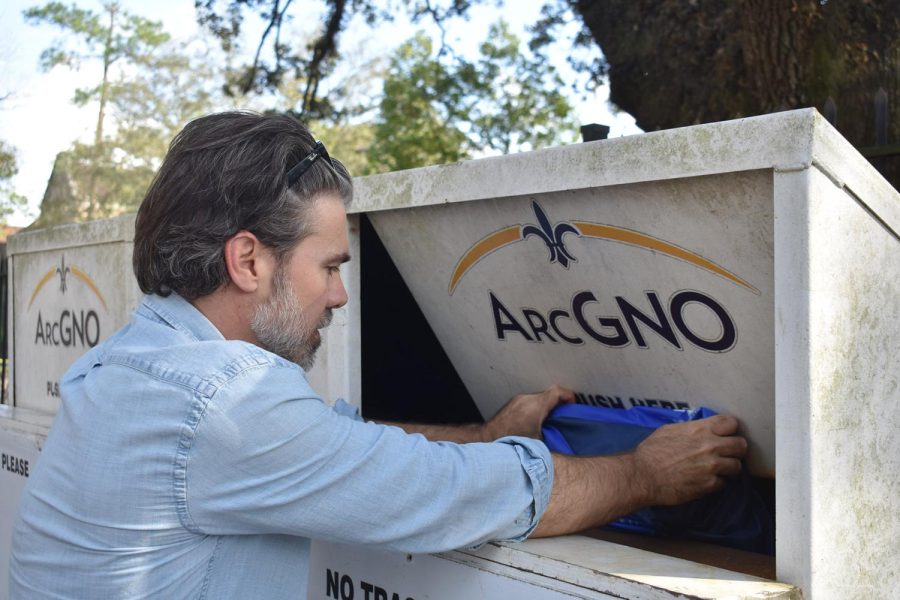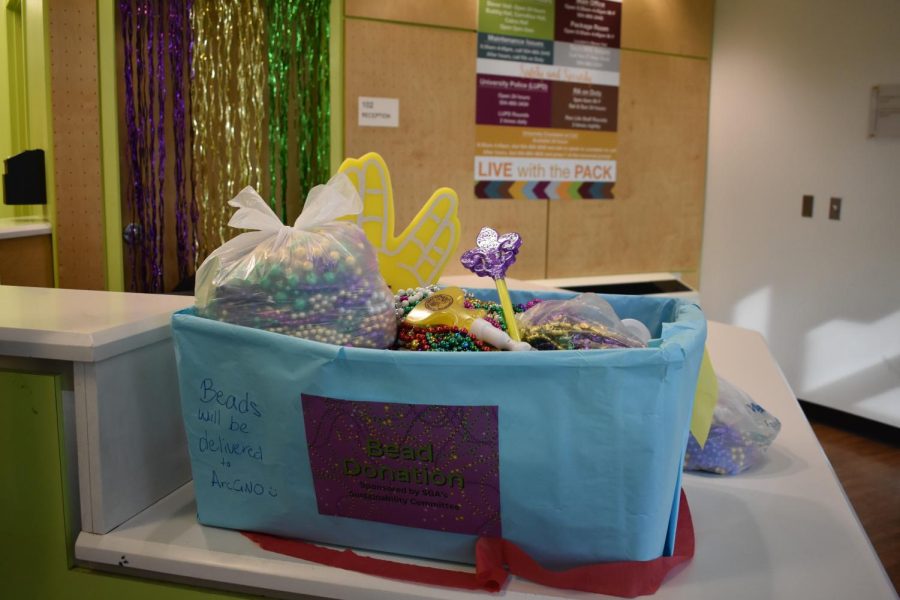Recycle center works to reduce Carnival waste
Local disposes of beads in front of an ArcGNO facility in Uptown, Feb. 24th. These beads will then be recycled and reused next Mardi Gras.
March 2, 2023
As floats rolled down the streets, countless arms flailed in the air, competing for the anticipated prize – a gleaming strand of metallic pearls. The moment these beads were caught or hit the ground, they lost their fleeting value.
Following the parades, the fate of the thousands of beads thrown during Mardi Gras has become an environmental concern. While some may be cherished and kept as mementos, many throws are discarded and left to clog up city drainage or contribute to the city’s landfills.
Last year, Mardi Gras celebrations sent 1,150 tons of waste to the landfill, according to the City of New Orleans. This waste can clog the city’s storm drainage system, leading to flooding issues. In 2018, krewes pulled 46 tons of beads from the catch basins near the main parade route, according to New Orleans city officials, as reported by The Times-Picayune.
Robert Thomas, Ph.D., Loyola’s environmental communication director, has observed the evolution of a “litter culture” that normalizes leaving large amounts of trash and throws behind.
“We always measure the success of Mardi Gras by the amount of garbage that’s picked up,” he said.
In response to environmental concerns, the city formed a recycling initiative called Recycle Dat in partnership with organizations like Arc of Greater New Orleans’ Mardi Gras Recycle Center. ArcGNO employs and supports people with intellectual disabilities while reducing Mardi Gras waste, according to their website.
Many of the beads left behind are picked up and taken to recycling centers like ArcGNO to be sorted, repackaged, and sold back to krewes the following year.
ArcGNO works with grocery stores, hotels, schools, and various local organizations to supply recycling bins across the city. This year, Loyola’s Student Government Association has partnered with ArcGNO to provide recycling bins in every residence hall.
“Loyola can contribute to cleaning up the city by recycling the large amount of beads students bring back to campus,” said Rowan Sawyer, an SGA senator-at-large and co-chair of the sustainability committee. “We must play our part in the mission to reduce the harmful residue that Mardi Gras leaves behind.”
Once the beads and throws are collected, they’re brought back to ArcGNO’s warehouse to be processed for reselling at their Recycle Center Bead Store.
“In the bead store, once they’re refurbished, recycled, and cleaned up, then they’re sorted by color or krewes and put in sections. Each krewe has their own section,” said LaTonya Quillens, the assistant director of community integration at ArcGNO. “Beads, toys, stuffed animals – anything you would want, it’s there.”
Many krewes have begun to utilize recycling services to purchase and reuse their custom beads due to cost-savings.
“I think most krewes are cognizant of the fact that they need to be recycling, especially if it saves money for them,” Thomas said. “That’s the success of sustainability across the board. If you can make money with it, it’s going to just take off like crazy.”
Alternative bead businesses have formed to offer more sustainable replacements for plastic beads with biodegradable materials. While bead alternatives are increasing in popularity, their higher production cost makes them less competitive with standard beads.
In order to be successful, Thomas emphasized that sustainability efforts must consider the important role of Mardi Gras in the city’s economy and culture.
While krewe leaders make the major decisions in terms of sustainability, krewe members can choose to purchase and advocate for more sustainable throws and practices.
“There’s a huge recycling system in place, but it’s not perfect, and there’s no coordination, so it’s really up to the krewes if they want to step up and do that sort of thing or not,” Thomas said. “We still need to figure out how to transition and still have the fun and the beauty.”








